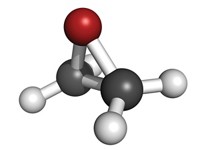Advertisement
Grab your lab coat. Let's get started
Welcome!
Welcome!
Create an account below to get 6 C&EN articles per month, receive newsletters and more - all free.
It seems this is your first time logging in online. Please enter the following information to continue.
As an ACS member you automatically get access to this site. All we need is few more details to create your reading experience.
Not you? Sign in with a different account.
Not you? Sign in with a different account.
ERROR 1
ERROR 1
ERROR 2
ERROR 2
ERROR 2
ERROR 2
ERROR 2
Password and Confirm password must match.
If you have an ACS member number, please enter it here so we can link this account to your membership. (optional)
ERROR 2
ACS values your privacy. By submitting your information, you are gaining access to C&EN and subscribing to our weekly newsletter. We use the information you provide to make your reading experience better, and we will never sell your data to third party members.
Environment
EPA Limits Emissions From PVC Facilities
by Glenn Hess
February 27, 2012
| A version of this story appeared in
Volume 90, Issue 9
EPA has issued final standards requiring facilities that produce polyvinyl chloride and copolymers to reduce emissions of several toxic air pollutants, including vinyl chloride, hydrogen chloride, and chlorinated dioxins and furans. The previous standard, established in 1976, set limits only for vinyl chloride. The agency expects the new rule to result in a total U.S. annual emission reduction of 238 tons of toxic air pollutants from large-scale emitters. EPA says the standards are based on currently available technologies, and facilities will have “the flexibility to choose the most practical and cost-effective control technology or technique” to reduce their emissions. Facilities will be required to monitor emissions at certain points in the PVC production process to ensure that the standards are met. The U.S. currently has 17 PVC production facilities, with the majority located in Louisiana and Texas. EPA estimates it will initially cost industry $18 million in total capital investment to meet the rule’s requirements, with additional annual costs of $4 million.



Join the conversation
Contact the reporter
Submit a Letter to the Editor for publication
Engage with us on Twitter